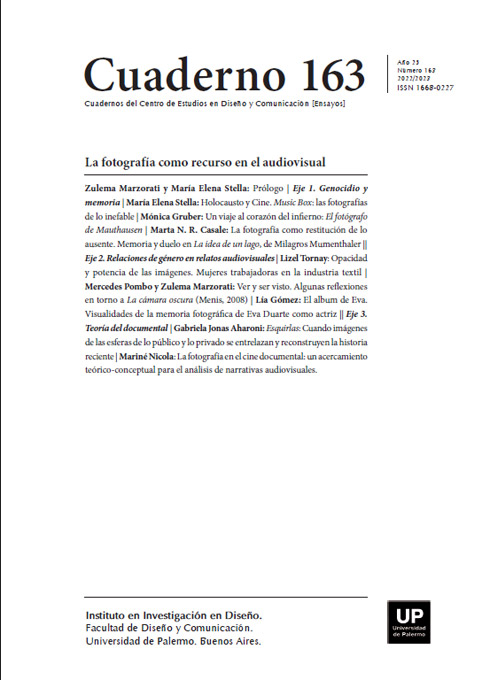Un viaje al corazón del infierno: El fotógrafo de Mauthausen
Abstract
In 2018, the director Mar Targarona brought Boix’s story to the screen in “The Photographer of Mauthausen”, starring Mario Casas. The film offers us a descent into the heart of hell to perceive the ignominy, the human cruelty but also the courage of the human being. Several questions will guide our work: how to denounce the horrors experienced? What do we expect as viewers of a fiction film? What role do photographic images play as historical documentation? Simon Wiesenthal, a prisoner of Mauthausen-Gusen, remembered the testimony of a Nazi soldier: “No matter how this war ends, we have won the war against you; none of you will be left alive to tell what happened, but even if one of you managed to escape, the world would not believe it. (…) Even if some evidence subsists and even if one of you survive, people will say that the facts you describe are too monstrous to be believed. (...)” (Primo Levi, 475). After the war, Boix would become a witness to the Nuremberg Trials, providing reliable evidence of what happened. Fortunately, the men believed in those images and testimonies, once again, the Nazis were wrong...
References
Aumont, J., Berlaga, A., Marie, M., Vernet, M. (1995). Estética del cine. Espacio fílmico, montaje, narración, lenguaje. Barcelona: Paidós.
Bauzá, H. F. (2015). Sortilegios de la memoria y el olvido. Buenos Aires: Akal.
Didi-Huberman. G. (2004). Imágenes pese a todo. Memorial visual del Holocausto. Barcelona: Paidós.
Han, Byung-Chul. (2016). Topología de la violencia. Buenos Aires: Herder.
Hernández de Miguel, C. (2015). Los últimos españoles de Mauthausen. La historia de nuestros deportados, sus verdugos y sus cómplices. Barcelona: B de Books.
Huyssen, A. (2009). Prólogo. Medios y memoria. Feld, C. y Stites Mor, J. (Comp.). El pasado que miramos. Memoria e imagen ante la historia reciente. Buenos Aires: Paidós.
Jelin, E. (2002). Los trabajos de la memoria. Madrid: Siglo XXI Editores.
Gubern, R. (1989). La imagen pornográfica y otras perversiones ópticas. Madrid: Akal.
Levi, P. (2005). Trilogía de Auschwitz. Si esto es un hombre; La tregua; Los hundidos y los salvados. Barcelona: Océano.
Nichols, B. (1997). La representación de la realidad. Cuestiones y conceptos sobre el documental. Buenos Aires: Paidós.
Sánchez-Biosca, V. (2009). Iconografías del horror: en busca de una ausencia. Debats. Revista de cultura, poder i societat, 103, 102-109.
Shohat, E., Stam, R. (2002). Multiculturalismo, cine y medios de comunicación. Crítica del pensamiento eurocéntrico. Barcelona: Paidós.
Sontag, S. (2004). Ante el dolor de los demás. Buenos Aires: Alfaguara.
_______. (2006). Sobre la fotografía. Buenos Aires: Alfaguara.
Wachsmann, N. (2016). KL. Una historia de los campos de concentración nazis. Buenos Aires: Crítica.
Los autores/as que publiquen en esta revista ceden los derechos de autor y de publicación a "Cuadernos del Centro de Estudios de Diseño y Comunicación", Aceptando el registro de su trabajo bajo una licencia de atribución de Creative Commons, que permite a terceros utilizar lo publicado siempre que de el crédito pertinente a los autores y a esta revista.


